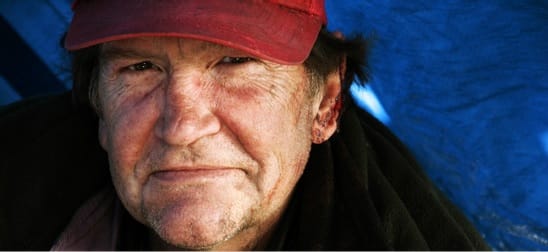
Editor’s Note: Happy holidays from the Santa Monica Next team. We will return in the new year with regular coverage.
The City of Santa Monica is calling for volunteers to help in the fight homelessness in the bayside city this January.
Join City staff and hundreds of local volunteers who turn out for Santa Monica’s annual homeless count. This year, the count will happen overnight from 10:30 p.m. on January 28 to 2:30 a.m. on January 29.
While the U.S. of Housing and Urban Development requires cities which receive federal money to combat poverty to perform an “in-time” count of their homeless populations once every two years, since 2009, Santa Monica has done it every year, usually just after the holiday season.
“It’s the most tangible way for us to understand what our need is in the community,” said Margaret Willis, Human Services administrator. “We know those are the people that are most likely the most vulnerable.”
Over the course of the evening, volunteers are divided into teams as they walk through the city’s grid counting — from afar — the number of people sleeping in shelters, in the streets, in their cars, or in other public places.
Fewer People Sleeping on the Streets
Santa Monica has been going “above and beyond” since 2009 because, Willis said, every two years is “is really too long of a wait.”
It was also in 2009 that Santa Monica adopted the “Action Plan to Address Homelessness,” which outlines the City’s strategy for helping the region’s most vulnerable people.
According to the plan, “Success is measured by reducing street homelessness,” and by that measure, Santa Monica has seen some success.
“We saw a big drop [in street homelessness] in 2009 and 2010,” said Willis. And the counts have been consistently under pre-Action Plan numbers. In 2014, volunteers counted a total of 742 homeless people. In 2009, the volunteers counted 915 people.
Housing First
Santa Monica was an early adopter of a “housing first” strategy to combat homelessness. As its name implies, the “housing first” strategy prioritizes getting people who are chronically homeless — usually because they are struggling with mental health issues — into supportive housing.
It’s ideal, Willis said, to get those people into homes near to the medical and mental health services they rely on for their well-being. Santa Monica is a service-rich community, she said.
However, Willis said, is is becoming increasingly difficult to house vulnerable people in Santa Monica as resources for funding affordable housing dry up, both at the national level and local level.
An increasingly expensive rental market — driven in part by slow rates of new housing construction in Santa Monica and the region — has discouraged property owners from participating in federal rent subsidy programs, like Section 8.
Additionally, Santa Monica, in 2012, lost its primary source of funding for building new, permanently affordable housing when redevelopment agencies throughout the state were shut down. Until 2012, Santa Monica spent about $15 million a year to help nonprofit housing developers finance the production of permanent affordable housing, either through new construction or adaptive reuse.
In November, conservative, anti-housing activists successfully opposed Measure H, a ballot measure the Council had put before the voters that would have created a revenue stream to fund affordable housing construction.
Measure H, through a property transfer tax, would have generated as much as $10 million a year for nonprofit housing developers.
While the City Council recently took measures that could help vulnerable residents who are currently in affordable or subsidized housing, there is the question of where new housing will come from.
“We will have to start to be creative about affordable housing,” Willis said.







